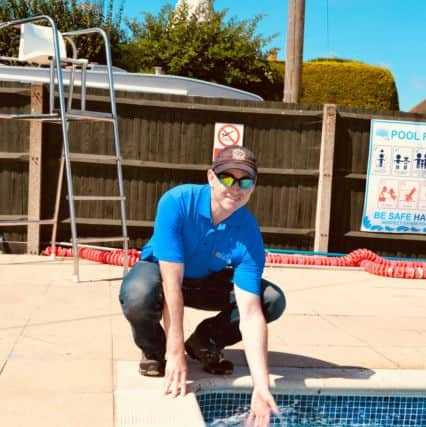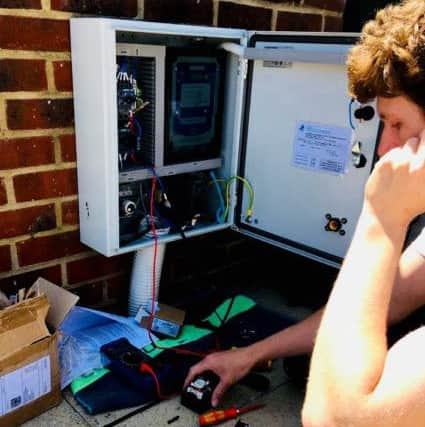Arundel Lido leak solution will save trust thousands of pounds


George Rose, a member of Arundel and District Rotary Club, designed the system following a meeting with trustees to solve problems caused by an ongoing leak in one of the outdoor pools.
He said: “I designed, specified and commissioned a monitoring and control system to automatically run the pump according to the water level in the cavity.
Advertisement
Hide AdAdvertisement
Hide Ad“The system consists of a capacitance level probe and local control panel with starter to ensure that the pump can be operated without any risk of damage.


“The consultation, design and commissioning were provided free of charge and the cost of the equipment was funded by Arundel and District Rotary Club. The system will save the Arundel and Downland Community Leisure Trust over £3,000 in annual water costs.”
The trust is a registered charity that runs the lido and it depends on volunteers and donations.
Lido manager Nikki Richardson gave a talk to Rotarians at one of their regular meetings, so George learned of a leakage issue at the main pool which was costing thousands of pounds in lost water.
Advertisement
Hide AdAdvertisement
Hide AdGeorge then met with operations director David May to discuss how the Rotary club could help to solve the leakage problem.


George said: “The main pool was constructed in 2002, inside the shell of the original pool. The pipework connecting the pool with the plant room is located in the cavity between the two structures.
“The leak was known to be coming somewhere from this pipework which, unfortunately, was not well designed, as it is virtually inaccessible from a maintenance perspective.
“The trust had already spent over £10,000 trying to find the leak, the high cost due to the thick reinforced concrete that had to be broken out to access the cavity and then put back again - not a sustainable course of action.
Advertisement
Hide AdAdvertisement
Hide Ad“As a counter measure, David had been using an existing inspection chamber to lower a submersible pump into the cavity and pump it out to recover the leaked water.
“The benefit of this exercise is that the water can be recovered many times faster than the rate at which it’s being lost. However, it was a painstaking manual task that required an operator to be present, to prevent the pump from running dry or boring itself into the shingle at the bottom, which had happened before, requiring specialist equipment to retrieve the pump.”
-----